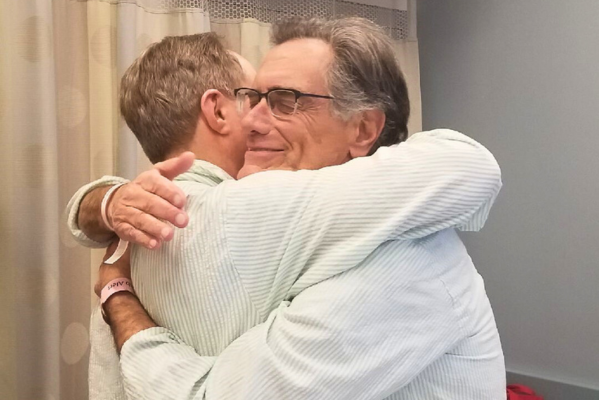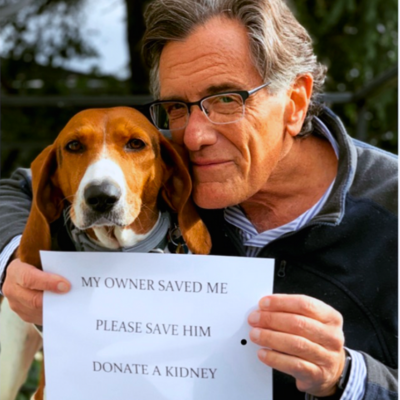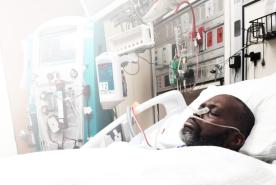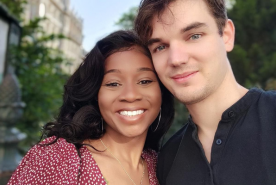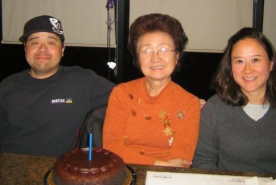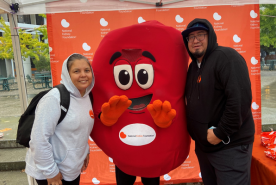April 17, 2025
When Daniel Kushnik learned he had polycystic kidney disease (PKD) in 1984, his doctor told him there was no cure. He’d likely need dialysis in the future. Decades later, Daniel did face kidney failure. His family and community rallied behind him. He received a life-saving transplant from a living donor and now pays it forward as an NKF Peers mentor.
An Uncertain Future
Daniel was 28 when his mother told him and his brother to get checked for PKD.
“It is a genetic condition that causes fluid-filled cysts to grow on the kidneys. My mom and grandmother had it,” Daniel said. “I went to the doctor and learned I did have PKD and was in the early stages of kidney disease.”
Unfortunately, there was little the doctors could do for him.
“There was no cure or PKD treatments. My doctor told me to just live my life. If I need dialysis, I’ll go on dialysis,” said Daniel. “I did just that.”
Daniel’s kidney function slowly declined over the decades.
“I was in stage 4 for a long time. I didn’t feel any different physically or mentally. I didn’t change my diet much,” Daniel said. “In May 2018, I went to my doctor for a routine check-up. He told me I was in stage 5 and needed to start preparing for dialysis.”
Daniel was in denial and refused to think about dialysis.
“From finding out you have kidney failure to realizing you need to find a donor while facing dialysis–the entire process is overwhelming,” said Daniel. “As I continued to refuse dialysis, I started experiencing symptoms like swelling and feeling more tired.”
With his wife and doctor’s support, Daniel finally accepted the reality of his situation in November of that year.
“I learned about my options: in-center hemodialysis, peritoneal dialysis, or home hemodialysis. I visited a hemodialysis center and panicked,” said Daniel. “It seemed so difficult, so I opted for home hemodialysis and began training.”
Home hemodialysis training can take a few weeks to a few months. Daniel’s own training was a minimum of nine weeks.
The Search for a Living Donor
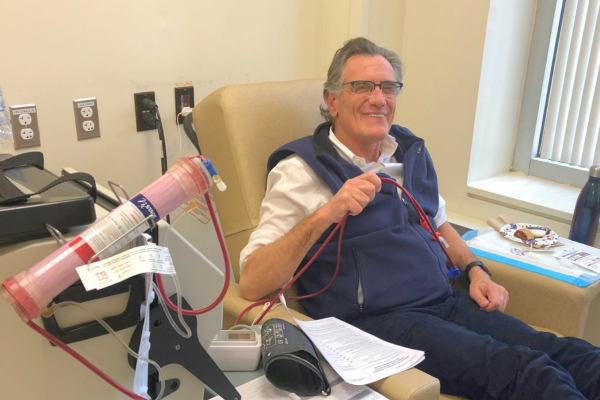
While training, Daniel and his wife began the search for a living donor.
“I was on the national deceased donor list, but the wait time for me was seven to ten years,” said Daniel. “It was up to us to find a donor, but I had no idea how to go about it. That’s when I found NKF’s patient education workshops for kidney transplant.”
NKF's ‘Finding a Living Donor’ program is designed to help people share their stories and find a living donor. Daniel learned that you don’t ask people to donate a kidney through the program. Instead, the program teaches you how to open up about your journey, let people know you need a kidney, and ask them to share your story.
Finding a living donor may feel overwhelming. These NKF resources can help:
Finding a living donor may feel overwhelming. These NKF resources can help:
“It’s all about awareness, so I made a video. My wife helped me spread the word on social media,” said Daniel. “So many people from our synagogue came forward to get tested.”
While no one was deemed a good candidate for donation, Daniel was touched that anyone attempted to give a part of themselves to him.
“One remarkable young man named Michael Weissman wasn’t able to donate because he had cancer in the past. He had to be cancer-free for five years,” Daniel said. “We were amazed he tried at all, thanked him, and thought that was it.”
Little did Daniel know that Michael wasn’t giving up. He was only a few months from the five-year mark and got reevaluated as soon as he passed it.
“I was just about to start doing home hemodialysis on my own. The company was days away from delivering my supplies. I had the hang of needle placement,” said Daniel. “Then I got the call. Michael was approved and a direct match.”
The surgery was scheduled soon after.
Subscribe today!
Join the NKF Blog Newsletter
Get inspirational stories and kidney disease resources delivered to your inbox every month. You'll gain practical insights and expert advice to help you better understand and manage your kidney health, no matter where you are on your kidney journey.
A Successful Transplant and Giving Back
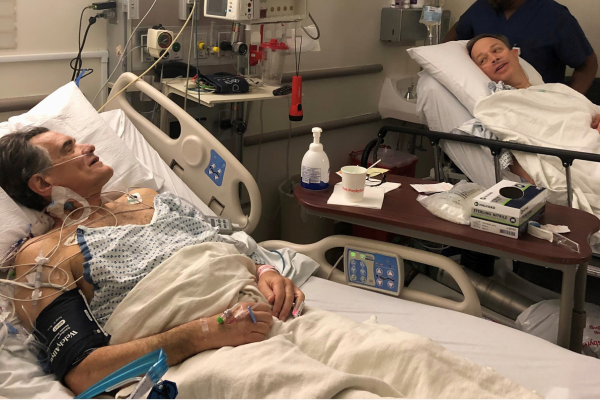
The transplant couldn’t have come at a better time.
“I’m extremely lucky. I found a donor within six months. I didn’t have to do dialysis on my own,” Daniel said. “Recovery was difficult for me. It took about six months to find the right anti-rejection medications and feel more normal.”
Michael recovered much more quickly and was back to work within a month.
“Michael always wanted to save a life. He's happy he donated his kidney to me,” said Daniel. “Now he’s in EMT training. He’s about to live his goals every day.”
As Daniel continued his recovery journey, the enormity of Michael’s gift struck him.
“I got extremely emotional wondering why I was chosen to get this gift. There are so many people on the waitlist who deserve a kidney,” said Daniel. “It took me a while to wrap my head around it.”
That’s when Daniel decided to give back as an NKF Peers mentor.
“I know what it’s like to feel overwhelmed and lost when you learn your kidneys are shutting down. Needing dialysis or a transplant is terrifying,” said Daniel. “I’ve lived it and want to help others with my knowledge.
Daniel has since mentored many people with kidney failure. With his support, three of them went on to get a transplant.
“I tell everyone not to give up–even if you don’t have anyone in your personal life to donate,” Daniel said. “You never know what person you will come across on your journey. Many people donate to someone they don’t know. Keep sharing your story.”
